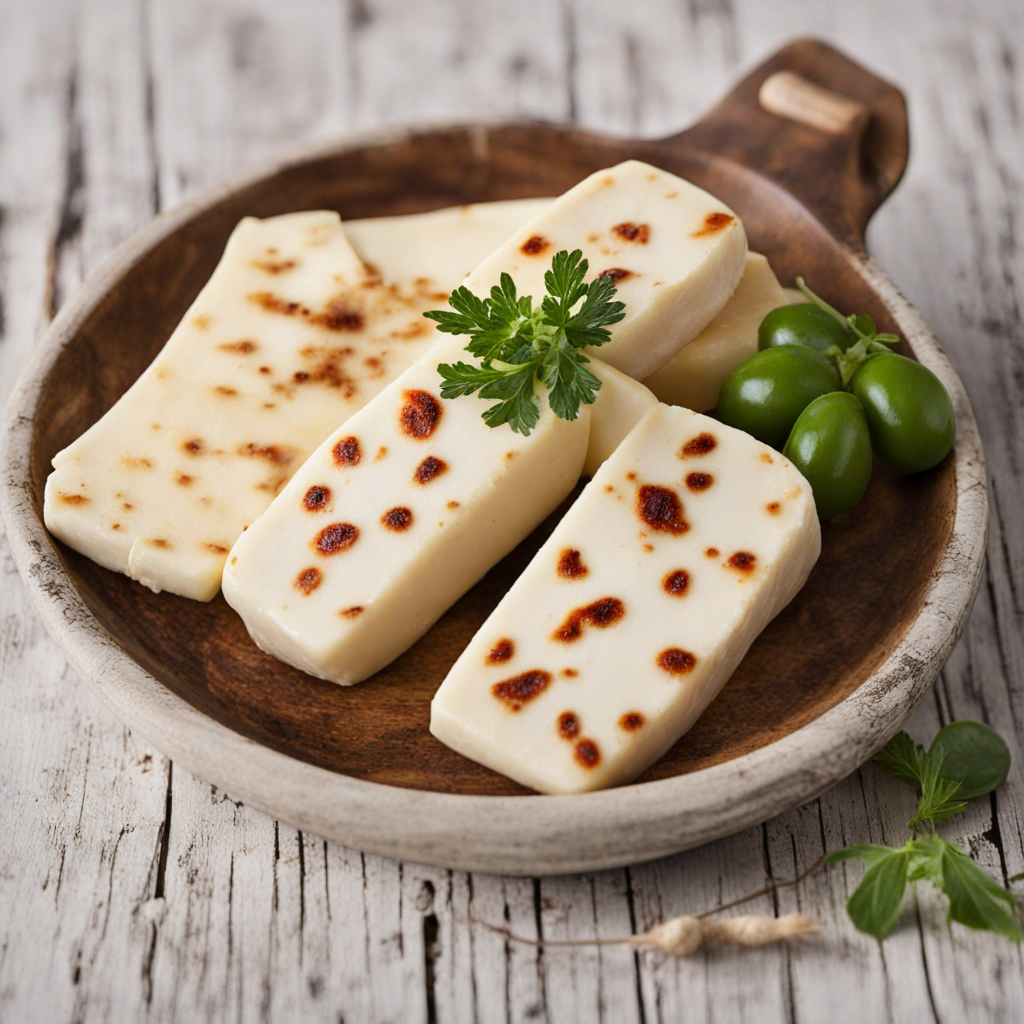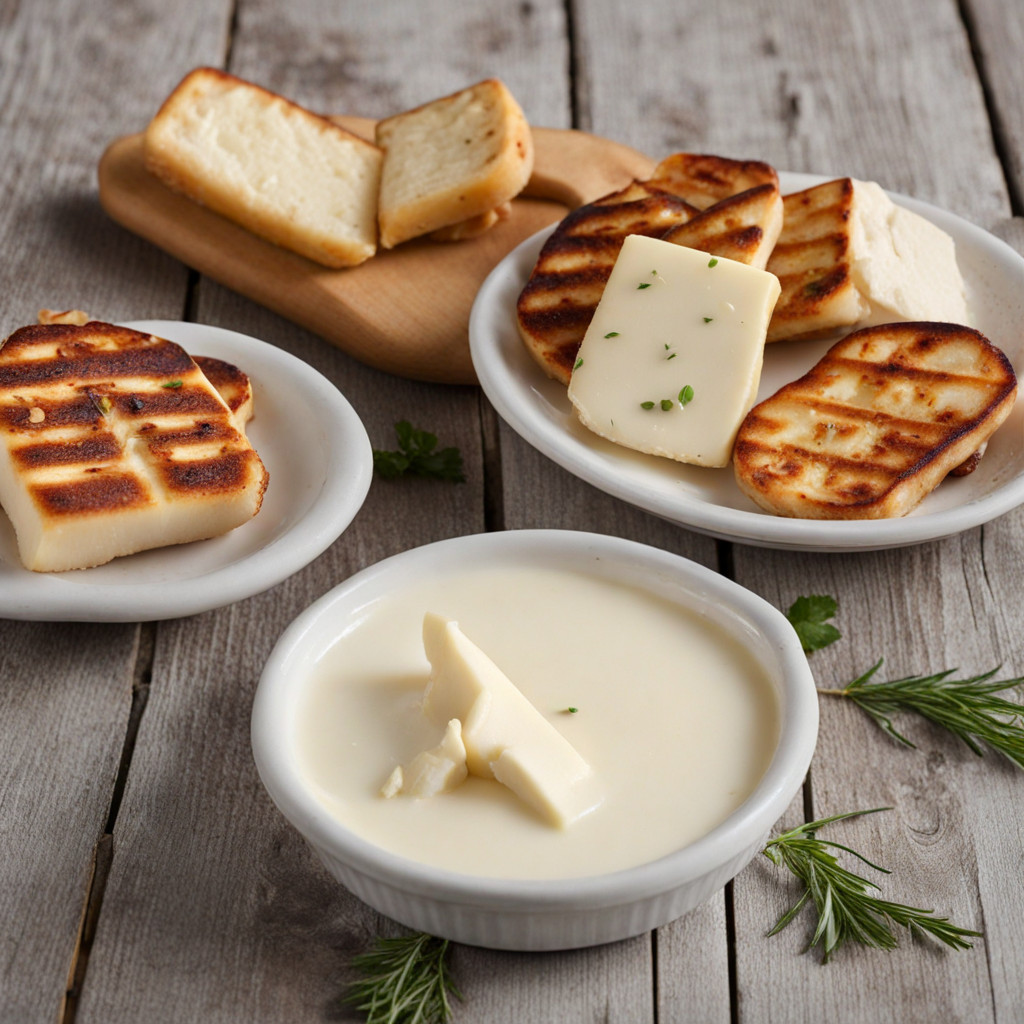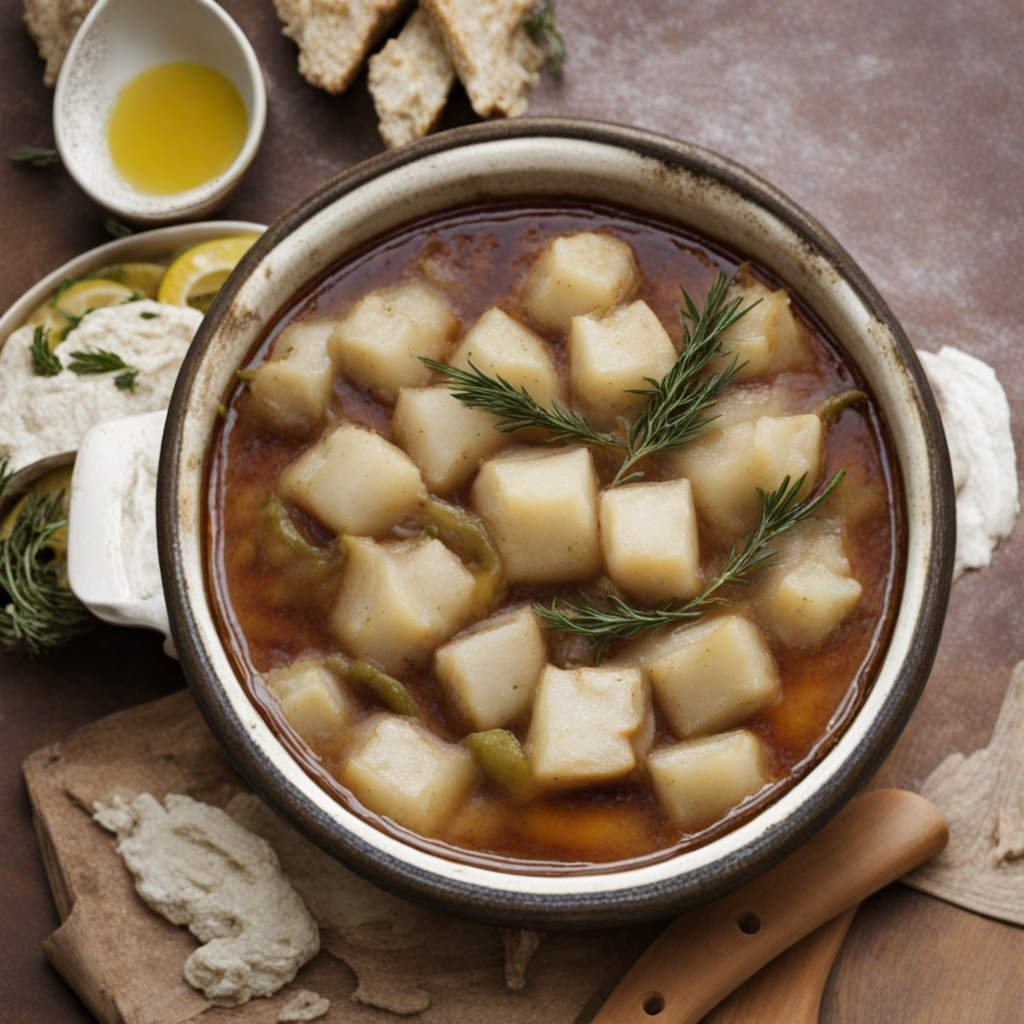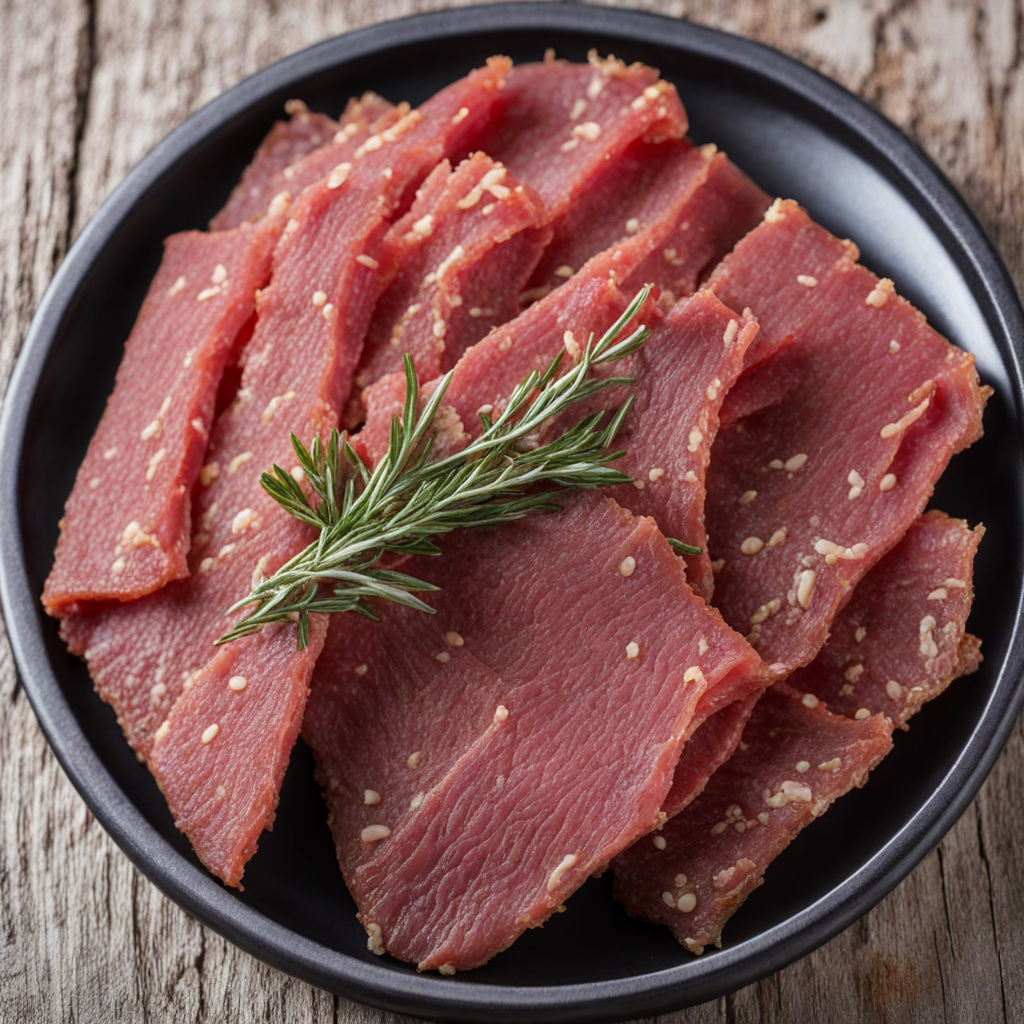Halloumi
Halloumi is a semi-hard, brined cheese originating from Cyprus, renowned for its unique texture and flavor. This cheese is made primarily from a mixture of goat's and sheep's milk, giving it a rich, creamy taste that is both savory and slightly tangy. The typical color is a pale white, and its firm yet elastic consistency allows it to hold its shape well when cooked. Halloumi's distinctive salty flavor is enhanced by the brining process, making it a delightful addition to various dishes or a star ingredient on its own. One of the most popular ways to enjoy Halloumi is by grilling or frying it, which transforms its texture into a delightfully crispy exterior while maintaining a soft, gooey center. As it cooks, it develops a golden-brown crust that adds a depth of flavor, creating a perfect contrast to its creamy interior. Served warm, grilled Halloumi pairs beautifully with fresh salads, vegetables, or alongside dips like tzatziki, and can even be used as a meat substitute in various dishes. This versatile cheese is not only a staple in Cypriot cuisine but has also gained popularity worldwide. It can be enjoyed in a variety of ways, from being cubed and tossed into salads to being sliced and added to sandwiches or wraps. Halloumi's ability to absorb flavors makes it an excellent companion for herbs, spices, and citrus, allowing for endless culinary creativity. As you explore the taste of Halloumi, you'll discover a delightful balance of saltiness and creaminess that is sure to elevate your dining experience.
How It Became This Dish
The Delicious Journey of Χαλλούμι: A Taste of Cyprus Origins of Χαλλούμι Χαλλούμι, known internationally as halloumi, is a semi-hard cheese that hails from the sun-kissed island of Cyprus. Its origins can be traced back to the 16th century, although some believe variations of the cheese may have existed even earlier. Traditionally made from a mixture of sheep’s and goat’s milk, halloumi is renowned for its unique texture and flavor profile, which has made it a staple in Cypriot cuisine. The name "halloumi" is thought to derive from the Arabic word "ḥalūm," meaning "to be able to tolerate," which reflects its culinary versatility. The cheese's production methods are steeped in tradition, passed down through generations of Cypriots. In the past, it was often made in local households, with families crafting their own recipes and techniques, adapting them to the milk available and the palate of their community. Cultural Significance Halloumi is not just a food item in Cyprus; it represents a significant part of the island's cultural identity. It is often associated with the Cypriot way of life, embodying the agricultural practices and pastoral traditions of the region. The cheese is commonly enjoyed during family gatherings, festive occasions, and religious celebrations, symbolizing togetherness and hospitality. Moreover, halloumi plays a role in various Cypriot dishes, ranging from the simple grilled cheese served with fresh vegetables to complex recipes featuring halloumi in salads, pastries, and even desserts. It is a versatile ingredient that can be enjoyed raw, fried, grilled, or baked, making it a beloved choice among locals and visitors alike. With the rise of tourism on the island, halloumi has also become a symbol of Cypriot pride. It is frequently featured in international restaurants, appearing on menus across the globe, thereby introducing diverse audiences to this delightful cheese. As a key element of Cypriot cuisine, halloumi has helped to foster a greater appreciation for the island's culinary heritage. Development Over Time Throughout the centuries, halloumi has evolved in response to changing agricultural practices, regional influences, and modern culinary trends. Initially, the cheese was made using traditional techniques that emphasized handcrafting and local resources. Farmers would produce halloumi primarily for their families and communities, ensuring that it was fresh and consumed within a short period. However, the 20th century saw significant changes in the production of halloumi. As demand increased, particularly with the rise of tourism in Cyprus, commercial dairies began to emerge. These establishments utilized modern technology to increase production capacity while maintaining the quality of the cheese. The introduction of pasteurization and standardized recipes allowed for a more consistent product, which was essential for meeting the growing demand from both local and international markets. In the early 2000s, halloumi gained recognition beyond its homeland. Its unique flavor and texture made it a hit among health-conscious consumers, particularly in the Mediterranean diet, which emphasizes fresh ingredients and wholesome foods. The cheese's high melting point made it a popular choice for grilling, further enhancing its appeal. As health trends shifted towards plant-based diets, halloumi’s reputation as a protein-rich ingredient was bolstered, attracting a diverse audience beyond traditional Cypriot cuisine. In 2010, halloumi's status received a significant boost when it was granted Protected Designation of Origin (PDO) status by the European Union. This designation protects the traditional methods of production and ensures that only cheese made in Cyprus, using local ingredients and following specific production techniques, can be labeled as halloumi. This not only safeguards the integrity of the cheese but also highlights its cultural significance to Cyprus, reinforcing its identity as a national treasure. Contemporary Halloumi Today, halloumi can be found in various forms, from artisanal varieties made by local cheesemakers to mass-produced options available in supermarkets worldwide. The cheese has transcended its humble origins, evolving into a culinary sensation embraced by chefs and home cooks alike. Grilled halloumi is often seen as a centerpiece in Mediterranean-inspired dishes, paired with fresh vegetables, fruits, or herbs to create vibrant and flavorful meals. Moreover, the global culinary scene has seen the emergence of innovative uses for halloumi, with chefs experimenting to incorporate it into diverse cuisines. From halloumi tacos to halloumi burgers, the cheese is being reimagined in exciting and unexpected ways, showcasing its adaptability and appeal. Vegetarian cuisine has particularly embraced halloumi, positioning it as a delicious alternative to meat, especially in grilling and barbecue contexts. As halloumi continues to gain popularity, efforts to maintain its traditional methods of production are also being prioritized. Many artisanal cheesemakers on the island are committed to using local ingredients and traditional techniques, ensuring that the authentic flavor and texture of halloumi are preserved for future generations. The cheese has also become a focal point for sustainable practices, with an emphasis on supporting local farmers and maintaining the agricultural heritage of Cyprus. Conclusion The history of Χαλλούμι is a reflection of Cyprus's rich cultural tapestry, encompassing the island's agricultural heritage, culinary traditions, and evolving identity in a globalized world. From its humble beginnings as a household staple to its current status as a beloved international delicacy, halloumi has captured the hearts and palates of people around the world. As we savor this delicious cheese, we not only indulge in its unique flavors but also pay homage to the generations of Cypriots who have proudly carried the tradition of halloumi through time. Its journey is a testament to the enduring power of food, connecting people, cultures, and histories in a way that transcends borders and unites us all.
You may like
Discover local flavors from Cyprus







